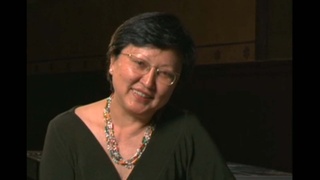Interviews
Life on board the migrant ship
I remember a lot about the ship. There was a sports day, a school performance, something like a school, and we all sang songs together. I was only five years old. I didn't go to elementary school yet, so all I remember is kindergarten-like things, singing and running around together.
Also, the food on the ship was so, how should I put it, the portions were so large that we couldn't finish it all. The diet in Japan in 1953 was very poor, but on the ship we were served delicacies three times a day. My mother was pregnant and got seasick so she couldn't eat much, but I remember the food on the ship being very nutritious.
When the ship arrived in Los Angeles, it was right after the war, so no Japanese were allowed to disembark. However, I was only five years old, so I clung to the crew and got off the ship, and I was the only one to set foot on American, how should I put it, land. I remember being told off a lot, but I remember that too.
Date: September 19, 2019
Location: California, US
Interviewer: Yoko Nishimura
Contributed by: Watase Media Arts Center, Japanese American National Museum
Explore More Videos

Reasons for immigrating to Brazil (Japanese)
Issei, Pioneer of women's education in Brazil

Opening a Japanese-style all-girls' school in Brazil (Japanese)
Issei, Pioneer of women's education in Brazil

Brazilian of Japanese descents (Portuguese)
Former Director, Museu Histórico da Imigração Japonesa no Brasil

Japan's impact on the image of Nikkei in Brazil (Portuguese)
Former Director, Museu Histórico da Imigração Japonesa no Brasil

Change in sense of Nikkei Brazilian identity over time (Portuguese)
Former Director, Museu Histórico da Imigração Japonesa no Brasil

Nikkei community concentrated in São Paulo (Portuguese)
Former Director, Museu Histórico da Imigração Japonesa no Brasil

Changing life styles of successive generations (Portuguese)
Former Director, Museu Histórico da Imigração Japonesa no Brasil

The difference between Nikkei community in Oizumi and Brazil (Japanese)
(b. 1979) Sansei Nikkei Brazilian who lives in Oizumi-machi in Gunma prefecture. He runs his own design studio.

Not too concerned about learning Japanese when he was growing up in Brazil (Portuguese)
(b. 1962) Japanese Brazilian owner of a Brazilian products store in Japan.

The reason why he immigrated to Japan (Portuguese)
(b. 1962) Japanese Brazilian owner of a Brazilian products store in Japan.

Advantages of living in Japan (Portuguese)
(b. 1962) Japanese Brazilian owner of a Brazilian products store in Japan.

Future of the Japanese Brazilian community in Japan (Portuguese)
(b. 1962) Japanese Brazilian owner of a Brazilian products store in Japan.

The reason why the city of Oizumi became “Brazilian town” (Portuguese)
(b. 1962) Japanese Brazilian owner of a Brazilian products store in Japan.

Japanese Brazilians living in Oizumi (Portuguese)
(b. 1962) Japanese Brazilian owner of a Brazilian products store in Japan.

Forcibly deported to the U.S. from Peru
(b. 1936) Japanese Peruvian incarcerated in Crystal City
